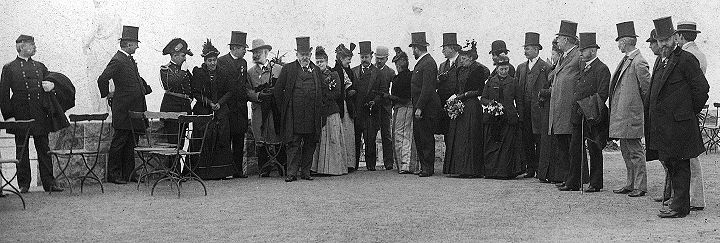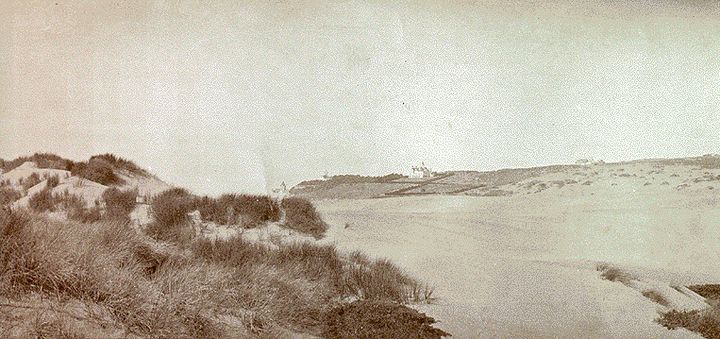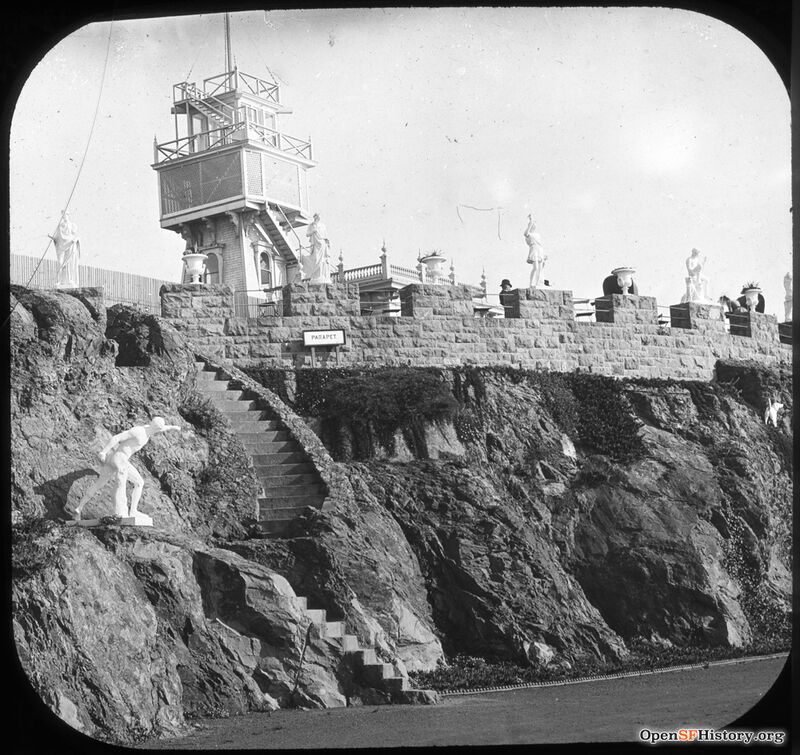Sutro Heights
Historical Essay
by Mae Silver

President Benjamin Harrison and his wife visit Sutro Heights with Adolph Sutro and a large party of dignitaries, April 27, 1891.
Photo courtesy Gwen Sanderson
Sutro Heights with its many statues lining the perimeter, circa 1890.
Photo: OpenSFHistory.org wnp13.125

Sand dunes in the Richmond, c. 1890. Cliff House is barely visible, left of center; Sutro's Mansion is just to the right of center on the horizon.
Photo: Private Collection, San Francisco
Many know Sutro best because of the Baths and Cliff House he built as part of a family resort that also included the parklike grounds surrounding his home. Set on the Heights above the resort, it commanded a fantastic panorama of Pacific sea and sky. He could have built a house anyplace in town. Even on Nob Hill. But he chose to buy Tetlow's Cottage in the outside lands. He treated his cottage as a farmhouse, shaped the surrounding property into a lush park, and opened it to the public in 1885. The grounds, containing about a hundred statues, several hundred chairs and tables, were open free with restrictions only precluding food, carriages, horses, and vandalism. His great love of land, education, books and children came together when he often opened his place for kindergartners, their teachers and supporters of this new Kindergarten movement for immigrant children. Today, walking through the remnants of Sutro Heights, one feels the presence of his magnificent figure on horseback. A quiet man with white, bushy sideburns, topped by a cowboy hat, tall in the saddle. Even when he was ill, his memory slipping in and out of the past, he wanted to stay on the ranch he loved. It seems he's still there today. Curiously, Sutro's remains that had mysteriously vanished years ago, were recently found in an urn lodged in a hillside on this property. They were removed and now reside with a relative.

